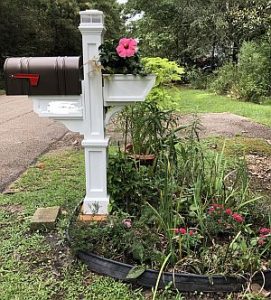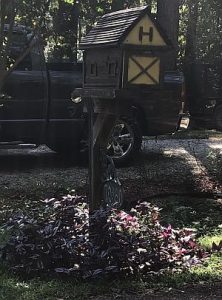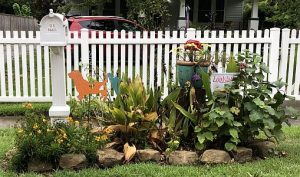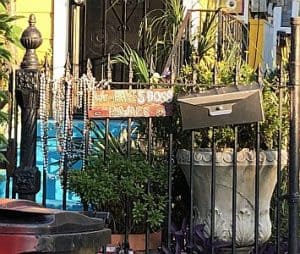
Mailbox Gardening
The mailbox does not have to be dull. It is one of the first things seen in front of the home. Whether a wall mounted mail slot or post mailbox, I say give it pizzazz.
In 1867 the postal service began to deliver mail directly to houses. In 1891, Philip B. Downing, an African American inventor patented the street letter drop mailbox with a hinged door that closed to protect the mail. It was metal with 4 legs. The post mounted boxes became popular to save the mail carrier time from walking back and forth to houses. The tunnel style mailbox was designed in 1915 by a postal engineer, Roy J. Joroleman. The flag was added so the mailman would raise the flag to alert that there was mail delivered. Later and still today we raise the flag when we have outgoing mail to make sure the carrier stops to retrieve it.
Mailboxes may be painted any color or covered with an artful painting. The mailbox provides an opportunity for some curb appeal and another garden spot to showcase. It can be an accent for your home, bringing the garden closer to the curb. The first plantings you see at the mailbox will set the tone for the rest of your garden. It is okay to paint your mailbox other colors than black, white or green, use some art and artifacts or be as formal as you like. This is a good spot to showcase annuals, garden art and holiday themes. Some may prefer a single specimen planting or use multiple plantings as in your larger garden.
When creating a mailbox garden, the same rules apply as in any other garden. Use plants with similar growing requirements for light, and water. Amend soil if needed and fertilize accordingly. The plants you use will have to be able to handle more heat, dust, exhaust and drier conditions being close to the road. Remember, the mail carrier has to be able recognize and access the mailbox to put your mail in the box and you should not use plants like roses with thorns, plants that attract a lot of bees or branches that can scratch your carrier or prevent mailbox access. Thorn-less roses, vines and ground cover look great but tall plants should be behind and not in front of the mailbox.

By Karen Blackburn








